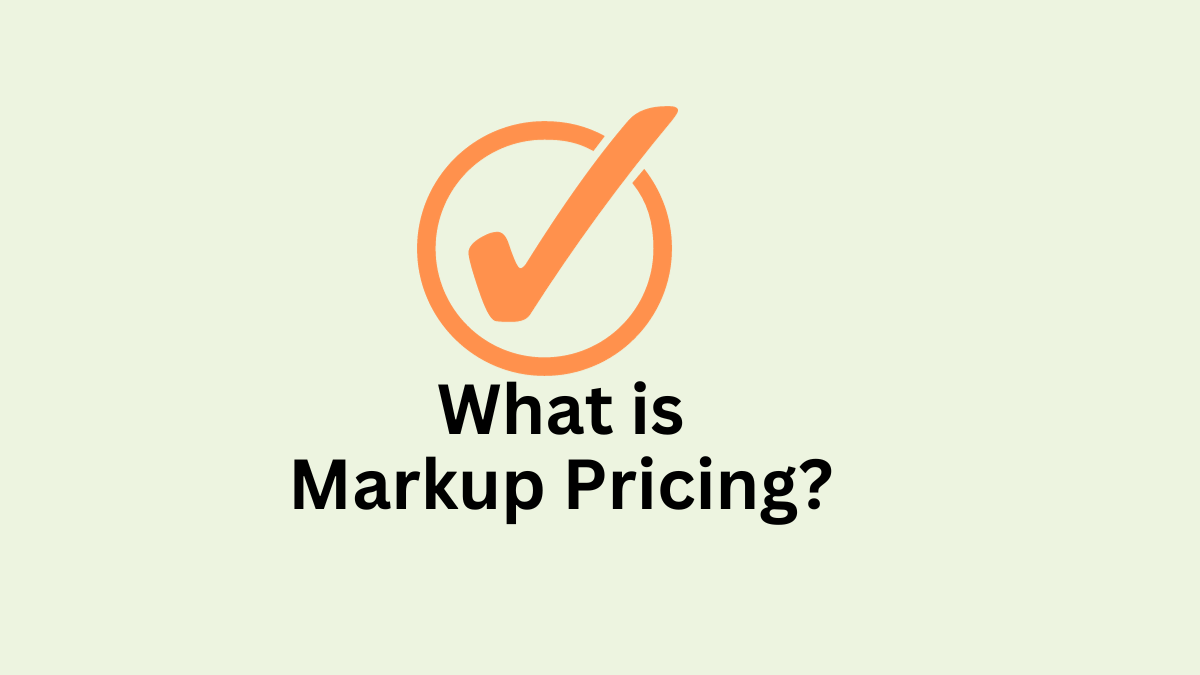What is Markup Pricing?
Markup pricing is a method businesses use to set prices for their products or services. It involves adding a specific amount, called a markup, to the production cost.
The formula for markup pricing is: Selling Price = Cost Price + Markup (profit). The markup covers not only the production cost but also the desired profit margin. This strategy simplifies profit calculations and ensures that businesses earn a profit on each sale. However, it can lead to inefficiency if costs are not managed carefully.
The advantage lies in its simplicity, allowing businesses to establish fair prices based on both costs and desired earnings. By using markup pricing, businesses strike a balance between covering their expenses and making a profit, creating a straightforward approach to pricing their offerings.
Pros of Markup Pricing
Pricing markup is a simple and easy-to-use pricing strategy. Let’s explore its advantages:
Simplicity
Markup pricing is like a straightforward recipe for setting prices. You take your cost, add a little extra as markup for profit, and voila, you have your selling price. It’s easy to calculate and understand.
Quick Decision-Making
In fast-paced business environments, making pricing decisions swiftly is crucial. Markup pricing allows businesses to do just that. You don’t need to dive deep into complex calculations; you add your markup and set the price.
Consistency
This method promotes consistency. You use the same formula each time, which helps establish clear pricing practices for your products or services.
Profit Assurance
With markup pricing, you ensure that every sale generates some profit. It’s a safety net for businesses, ensuring they don’t sell at a loss.
Read More: 3 Objectives of Pricing in Marketing
Cost Coverage
Markup pricing includes all costs, both variable (like materials) and fixed (like rent). This comprehensive approach means you’re not just covering the cost of production but also your overhead, making it a reliable method for long-term financial stability.
Cons of Markup Pricing
Markup pricing also has some drawbacks:
Inefficiency Incentive
One downside is that it can sometimes encourage inefficiency. Since the price is based on a fixed markup, businesses may not be as motivated to reduce costs or increase productivity.
Sunk Costs
Markup pricing includes both variable and fixed costs. Fixed costs, like rent, can’t be changed in the short term. So, this pricing strategy might not account for cost-saving measures.
Read More: Factors Affecting Product Pricing
Lack of Fine-Tuning
It doesn’t allow for fine-tuning prices based on market demand. If customers are willing to pay more for a product, you can’t easily adjust the markup to capture that additional value.
Raw Material Fluctuations
When the cost of raw materials fluctuates, markup pricing can pose challenges. It doesn’t offer the flexibility to quickly adapt to changing production costs.
Examples of Markup Pricing
Let’s say Sarah owns a small bakery and wants to determine the selling price of a cake she bakes. The total cost of ingredients, labor, and overhead for one cake is $20. Sarah decides she wants to apply a 50% markup on the cost to ensure a decent profit.
Using the markup pricing method, Sarah calculates the selling price as follows:
- Cost of the Cake: $20 (Cost of ingredients, labor, and overhead)
- Markup Percentage: 50% (desired profit margin)
Read More: 10 Importance of Pricing in Business
To calculate the markup amount, she multiplies the cost by the markup percentage:
Markup Amount = $20 × 0.50 = $10
Then, she adds the markup amount to the cost to get the selling price:
Selling Price = Cost + Markup Amount = $20 + $10 = $30
So, Sarah should sell her cake at $30 to achieve a 50% markup, ensuring that she covers her costs and earns a profit on each sale. This straightforward calculation method allows her to set a fair price for her delicious cakes while ensuring her business remains profitable.
What is the Markup Price?
The markup price, in simple terms, is the additional amount added to the cost price of a product or service to determine its selling price. It represents the profit margin a business wants to achieve. This pricing strategy ensures that a business covers its costs and generates a profit, making it a fundamental element in pricing decisions.
Read Next: 6 Characteristics of Service in Marketing
Arti Kushmi holds a BBS (Bachelor in Business Studies) degree and shares her business and marketing knowledge through this website. While not writing she will be reading and enjoying the moment.
